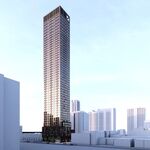kettal
Banned
Subway:Eglinton is not a subway, won't function like a subway, and won't be called a subway.
n.
1.
- 1. An underground urban railroad, usually operated by electricity.
- 2. A passage for such a railroad.
2. An underground tunnel or passage, as for a water main or for pedestrians.




